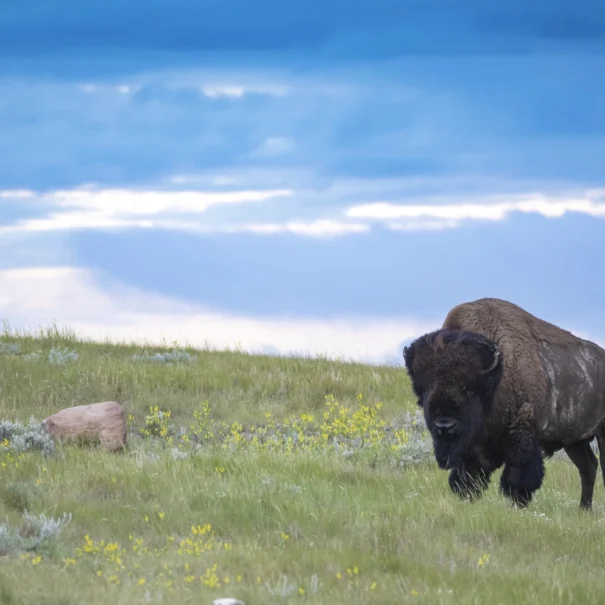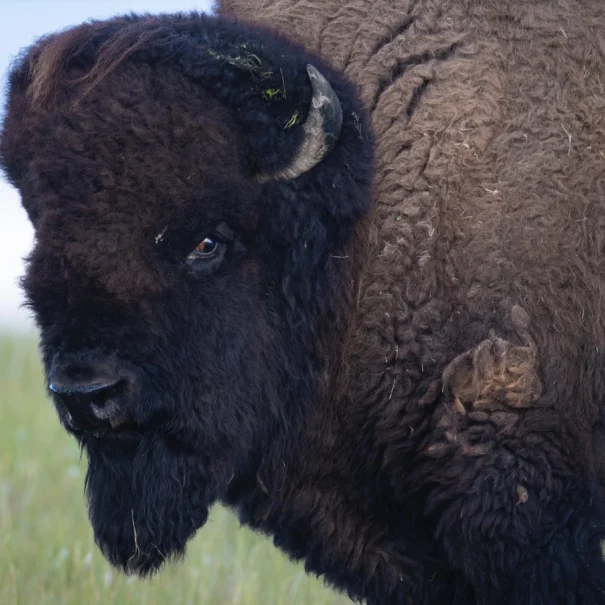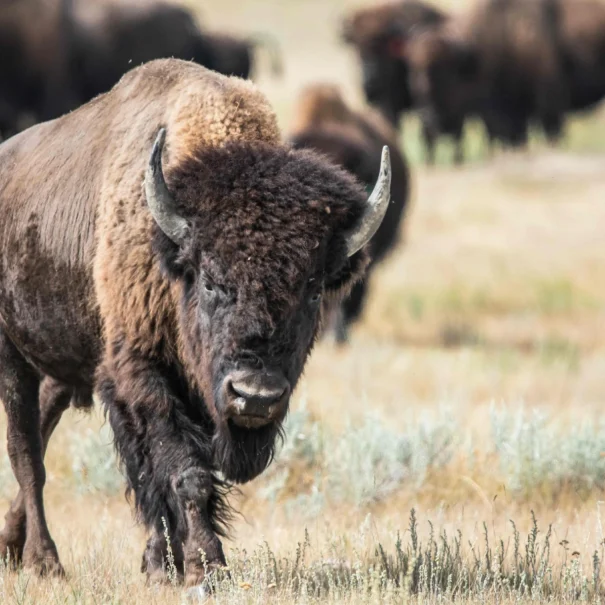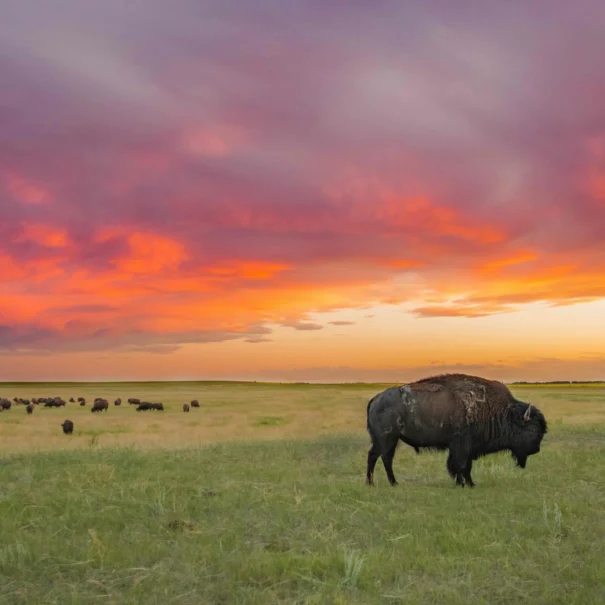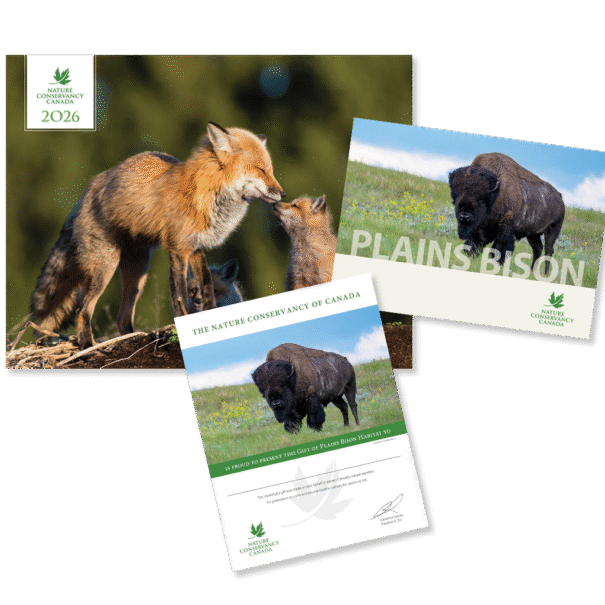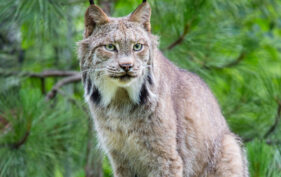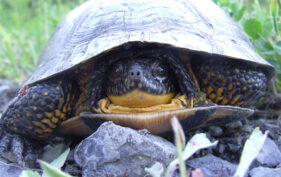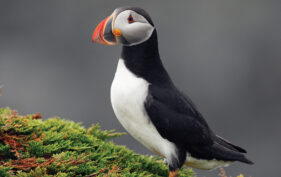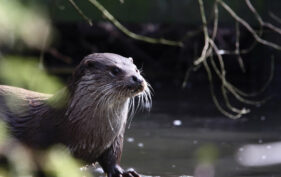Plains bison
Plains bison, once numbering in the millions, are now considered threatened in Canada. Historically, this grazer’s Canadian range extended from the Rockies, across the Prairies and into the tall grass region of eastern Manitoba. Today, small isolated herds can be found in British Columbia, Alberta, Saskatchewan and Manitoba.
Gift details
Digital download includes:
- Digital species booklet
- Digital full-colour certificate
- Informational video
Physical package includes:
- 2026 NCC calendar
- Species booklet
- Full-colour certificate
Need to ship to multiple addresses? Visit the FAQ page for more information.
Your Gift in Action
Your gift will conserve critical habitats and ensure a future for species at risk. It will also build healthier, more resilient ecosystems that provide essential benefits and services to people and their communities, while countering the effects of climate change and biodiversity loss.
Since 1962, NCC has brought Canadians together to conserve and restore more than 15 million hectares, coast to coast to coast. But we must do more faster and accelerate the pace of conservation. Every gift and donation counts.
Plains bison
Plains bison, once numbering in the millions, are now considered threatened in Canada. Historically, this grazer’s Canadian range extended from the Rockies, across the Prairies and into the tall grass region of eastern Manitoba. Today, small isolated herds can be found in British Columbia, Alberta, Saskatchewan and Manitoba.
The Nature Conservancy of Canada (NCC) reintroduced this species to its native habitat at Old Man on His Back Prairie and Heritage Conservation Area (OMB) in southwestern Saskatchewan in 2003. Since then, NCC has continued to manage the herd of genetically pure plains bison here. This managed herd currently numbers 75 cows and seven breeding bulls.
Grazing is an important part of grassland landscapes. The ecosystem evolved to allow bison to roam on it, eat it and fertilize it with their manure. Bison management at OMB takes into account the impact that the species has on the landscape, and the herd size is managed to ensure healthy bison and healthy prairie.
Photo 1 Jason Bantle; Photo 2 Jason Bantle; Photo 3 Leta Pezderic; Photo 4 Leta Pezderic

